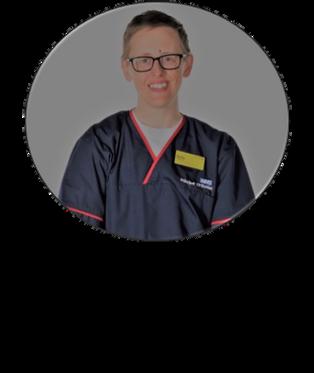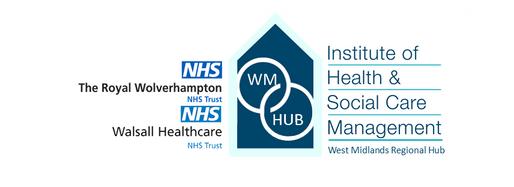
7 minute read
West Midlands - Using Reflexivity to Optimise Teamwork
Using reflexivity to optimise teamwork
Author : Dr Nicky Eddison, Catherine McKeown, and Dr Ros Leslie Trust : RWT

Sub-optimal functioning within a team can have serious consequences on task outcomes, in healthcare this can impact service users. It can also impact individual health and wellbeing, staff progression, job satisfaction and attrition rates. The ability to examine one’s feelings, reactions, and motives and how these influence what one does and thinks is known as reflexivity1. When applied to the context of a team, it is the extent to which teams take the time to stop and reflect together on what they are trying to achieve and the mechanisms of how they achieve their aims. This is typically an area that teams neglect. They do so at their peril.
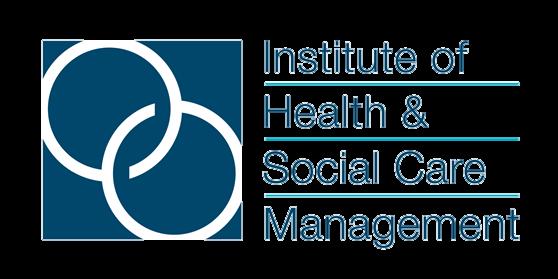
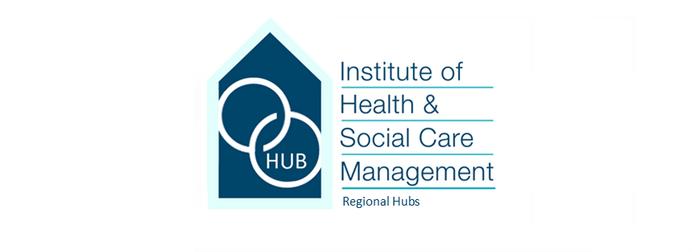
July 2022


The conscious reflection on team functioning is an important process in the development of effective teams, and an important predictor of team outcomes. The higher the team reflexivity the more innovative the team. Team reflexivity questionnaire Team reflexivity is a useful and straightforward way to think about how well a team is functioning and how effective it is. It can be measured by a dedicated questionnaire produced by Michael West. The questionnaire is based on two main dimensions. The first dimension is ‘task reflexivity’, which refers to reflexive behaviours with respect to the team’s task. Exploring how well the team reviews, responds, and adapts to processes and objectives. The second dimension is ‘social reflexivity’, which refers to the extent a team reflects on the social processes within the team. Exploring how well people in the team work on their relationships, identifying and resolving conflict and building a sense of belonging and cohesion. A team demonstrates social reflexivity by being supportive when the team or individual are experiencing a stressful situation. Sharing knowledge and skills, practising civility, and resolving disagreements quickly. Task and social aspects of reflexivity can influence how well a team performs. An effective leader requires an understanding of the dynamics of these two aspects within their team.


July 2022

The reflexivity questionnaire should be completed by all team members. Everyone’s score is then calculated for both task and social reflexivity. All the participants’ scores are then plotted on a simple graph. The resultant diagram will indicate the extent to which team members agree about the type of team they work in.


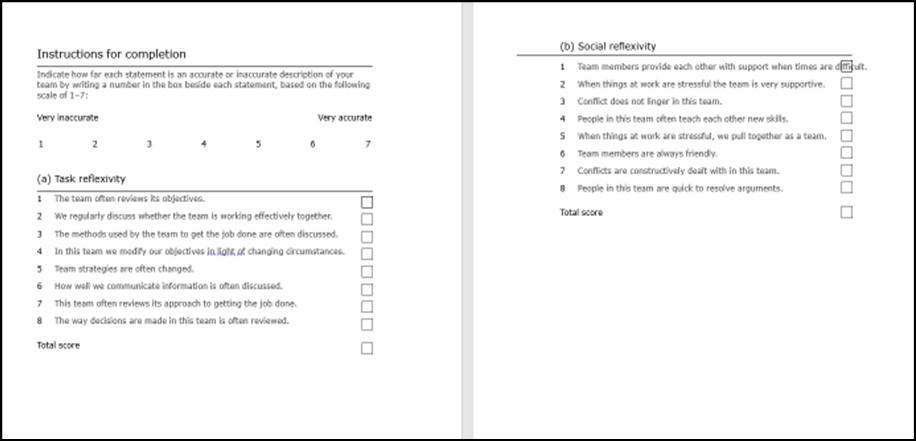

July 2022

The four types of teams The outcome of the questionnaire will help identify which of the four team types4 a team is currently functioning as.


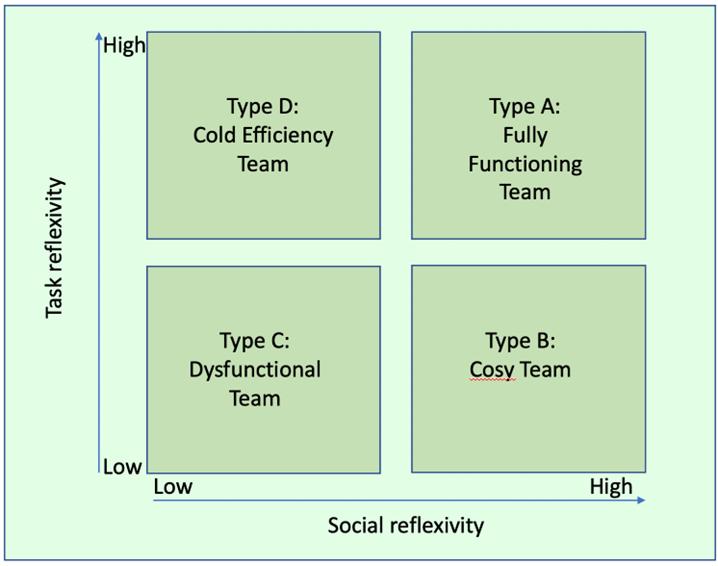

July 2022
Type A: A fully functioning team represents a team that reflects on and modifies its objectives, processes, tasks, and social support strategies appropriately.

Type B: A cosy team has warmth, support, and unity amongst team members, but may not be efficient or functional.
Type C: The dysfunctional team has poor functionality and team unity.

Type D: The cold efficiency team's task performance tends to be good, but the team unity is poor.
Experience with using the reflexivity questionnaire
The orthoptic service at the Royal Wolverhampton NHS Trust has been using the reflexivity questionnaire since 2018 with the aim of exploring and reviewing how the team is functioning. Most recently, the questionnaire was completed by 10 of the 12 members of the team.

The results of the questionnaire were then analysed and plotted on the team type quadrant. The results indicated that the team largely sat within the ‘fully functioning team’ type but there were a small number of results which fell into the ‘cosy team’ type. This suggests an emerging issue where social relationships within the team might be preventing honest and open discussions around task objectives and processes.
July 2022



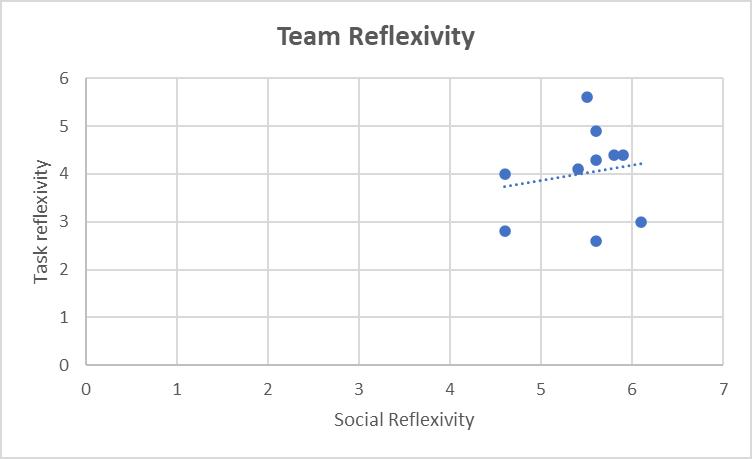
Further analysis of the team’s responses showed that the score for the question “Conflicts are constructively dealt with in this team” was the lowest of all the social reflexivity questions whilst “team members are always friendly” scored the highest. The first dysfunction of a team5 is the absence of trust, essentially the unwillingness to be vulnerable, to be open and honest about mistakes and weaknesses. The lack of trust sets the tone for the second dysfunction which is the fear of conflict. The inability of the team to participate in unfiltered debate of suggestions and ideas, instead, they choose to guard their feelings and opinions.

July 2022


When a team trusts each other, it can thrive in an environment of constructive conflict. Conflict often elicits a negative connotation, when in fact, constructive conflict is essential for a team to thrive. By utilising the team reflexivity questionnaire, the potential issues have been identified and provided the team with an opportunity to discuss and review the findings.


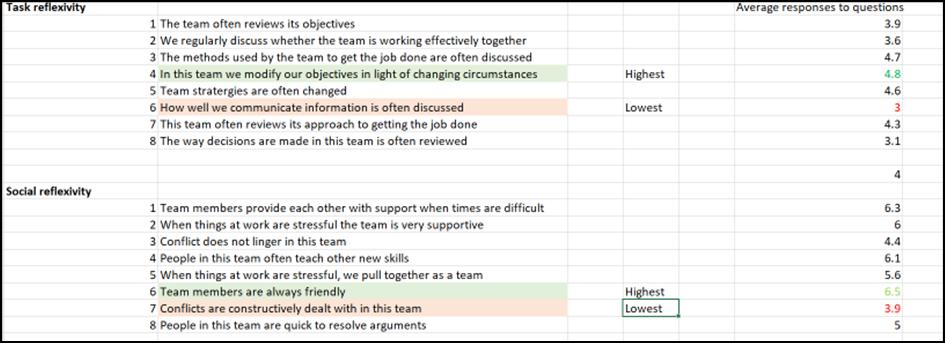

July 2022

The Assistant Head of Orthoptics said it was reassuring to see that the team fell into the category of fully functioning, but acknowledged the results also highlighted the risk of the team becoming too cosy in its approach to operational procedures.
It was felt that conflict was perceived as a negative occurrence and perhaps something that is felt more acutely within this team as it is rare. People within the team value their social aspect of working relationships very highly and if this is compromised for any reason it is perceived to be a significant issue. This provided an opportunity for the team to reflect upon the way in which they communicate with one another, and the need for open, honest, and direct conversations. This led to team members reporting that they would prefer to be informed of issues that arise straight away, as opposed to in a 1:1 scenario or at a later date.
The need and benefit for team members to be more aware of operational issues within the department was also discussed. Solutions put forward to address this were an improved structure to 1:1 meetings along with more regular whole team meetings with an operational agenda.
It will be interesting to review the results of this questionnaire when repeated in 12 months’ time, to establish whether the changes that have been implemented have been effective.


July 2022


If you would like more information on the team reflexivity questionnaire, how to access it and how to use it please contact the authors of this article.
Dr Nicky Eddison is an Associate Professor and AHP Research Lead.


Catherine McKeown is the Assistant Head of Orthoptics. Dr Ros Leslie is the Non-Medical Research Lead and Chief AHP



July 2022
